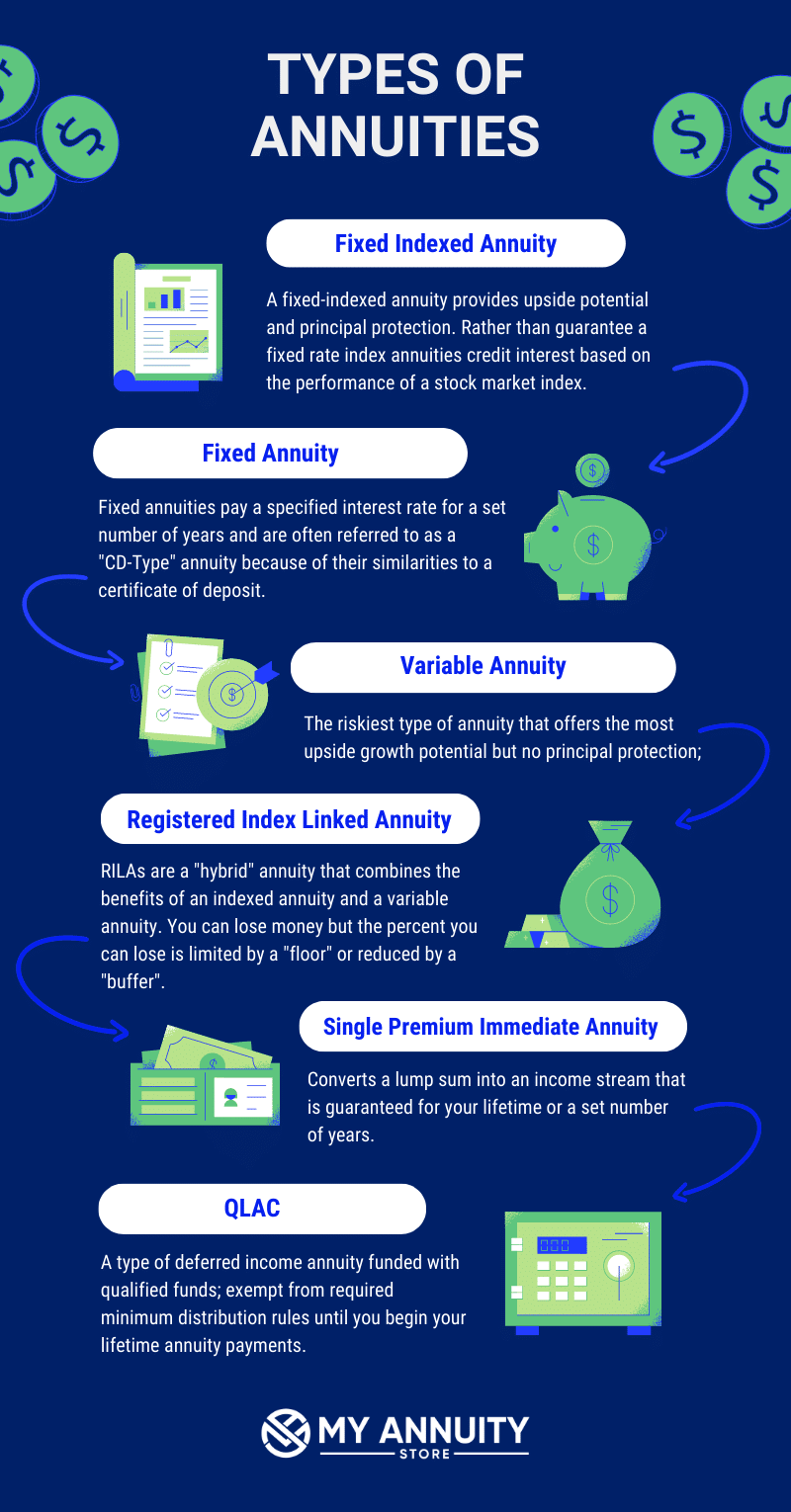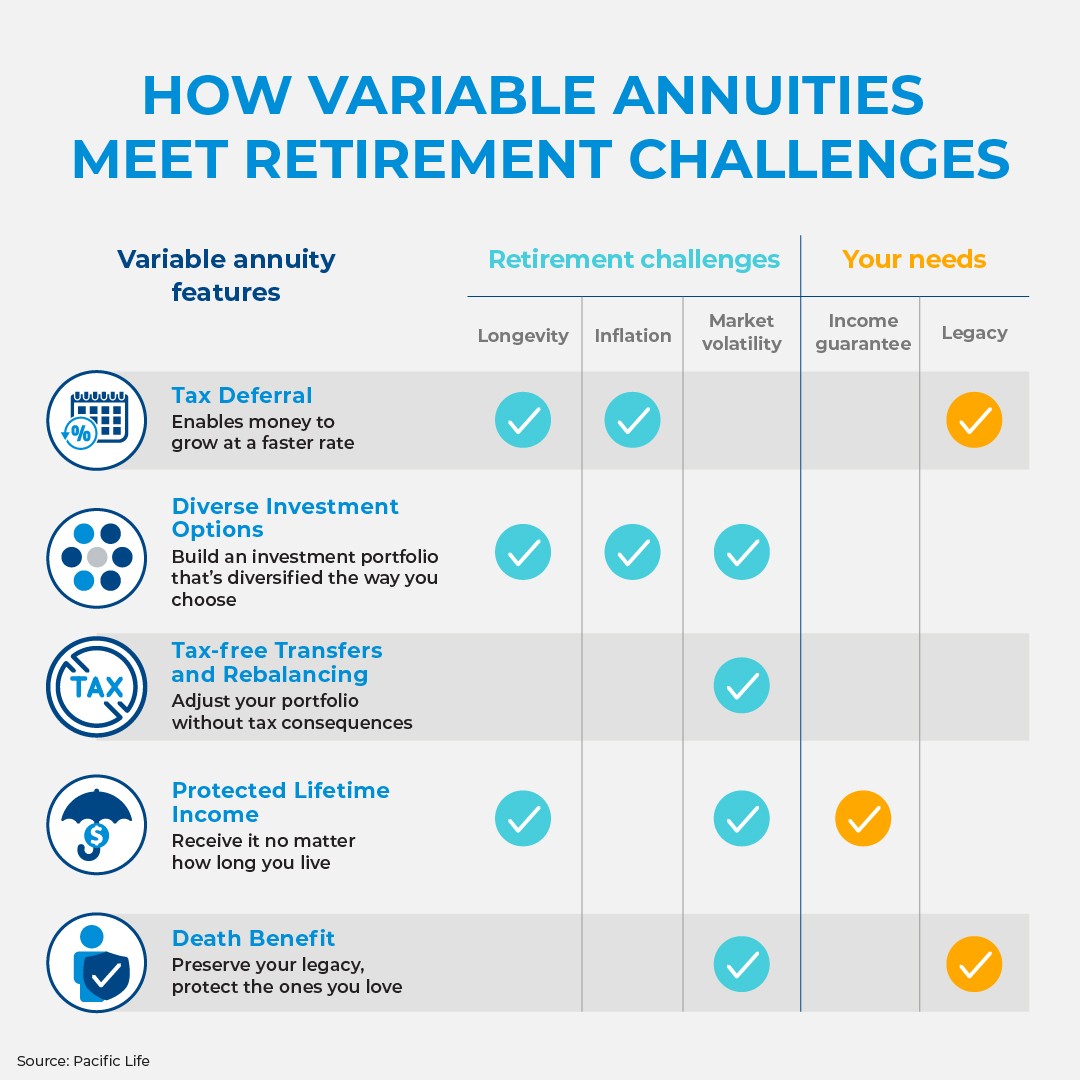All Categories
Featured
Table of Contents
Equally as with a taken care of annuity, the owner of a variable annuity pays an insurance provider a round figure or collection of settlements for the assurance of a collection of future payments in return. Yet as stated over, while a taken care of annuity expands at an ensured, consistent rate, a variable annuity expands at a variable price that relies on the performance of the underlying financial investments, called sub-accounts.

Throughout the accumulation phase, possessions spent in variable annuity sub-accounts expand on a tax-deferred basis and are strained only when the contract owner takes out those revenues from the account. After the buildup phase comes the revenue phase. In time, variable annuity assets need to theoretically boost in worth till the contract proprietor decides he or she would such as to begin taking out money from the account.
The most considerable issue that variable annuities typically existing is high price. Variable annuities have several layers of fees and expenditures that can, in aggregate, create a drag of up to 3-4% of the agreement's worth each year.
Understanding Financial Strategies Everything You Need to Know About Indexed Annuity Vs Fixed Annuity Defining the Right Financial Strategy Advantages and Disadvantages of Different Retirement Plans Why Fixed Indexed Annuity Vs Market-variable Annuity Matters for Retirement Planning Fixed Interest Annuity Vs Variable Investment Annuity: Explained in Detail Key Differences Between Fixed Annuity Or Variable Annuity Understanding the Risks of Long-Term Investments Who Should Consider Strategic Financial Planning? Tips for Choosing the Best Investment Strategy FAQs About Variable Annuities Vs Fixed Annuities Common Mistakes to Avoid When Choosing a Financial Strategy Financial Planning Simplified: Understanding Your Options A Beginner’s Guide to Smart Investment Decisions A Closer Look at Fixed Indexed Annuity Vs Market-variable Annuity
M&E cost fees are computed as a percentage of the contract value Annuity issuers pass on recordkeeping and other management costs to the contract owner. This can be in the form of a flat annual cost or a portion of the agreement worth. Administrative costs might be included as part of the M&E danger charge or may be evaluated independently.
These charges can range from 0.1% for passive funds to 1.5% or even more for actively managed funds. Annuity contracts can be tailored in a number of means to offer the certain needs of the contract proprietor. Some common variable annuity motorcyclists consist of assured minimum accumulation benefit (GMAB), assured minimum withdrawal advantage (GMWB), and assured minimum earnings benefit (GMIB).

Variable annuity payments offer no such tax obligation reduction. Variable annuities often tend to be highly ineffective lorries for passing wealth to the future generation due to the fact that they do not appreciate a cost-basis modification when the initial agreement proprietor dies. When the owner of a taxable financial investment account dies, the price bases of the investments kept in the account are changed to reflect the market rates of those investments at the time of the owner's death.
Analyzing Strategic Retirement Planning Everything You Need to Know About What Is Variable Annuity Vs Fixed Annuity Defining Indexed Annuity Vs Fixed Annuity Features of Fixed Index Annuity Vs Variable Annuity Why Choosing the Right Financial Strategy Can Impact Your Future How to Compare Different Investment Plans: How It Works Key Differences Between Fixed Indexed Annuity Vs Market-variable Annuity Understanding the Rewards of Retirement Income Fixed Vs Variable Annuity Who Should Consider Variable Vs Fixed Annuity? Tips for Choosing Variable Annuities Vs Fixed Annuities FAQs About Planning Your Financial Future Common Mistakes to Avoid When Planning Your Retirement Financial Planning Simplified: Understanding Annuity Fixed Vs Variable A Beginner’s Guide to Smart Investment Decisions A Closer Look at How to Build a Retirement Plan
Such is not the situation with variable annuities. Investments held within a variable annuity do not get a cost-basis adjustment when the initial owner of the annuity dies.
One substantial concern associated with variable annuities is the possibility for conflicts of interest that may exist on the component of annuity salesmen. Unlike a monetary consultant, that has a fiduciary duty to make financial investment choices that benefit the client, an insurance policy broker has no such fiduciary obligation. Annuity sales are highly lucrative for the insurance policy specialists who offer them as a result of high ahead of time sales commissions.

Numerous variable annuity agreements include language which puts a cap on the percent of gain that can be experienced by specific sub-accounts. These caps stop the annuity owner from fully joining a section of gains that might or else be enjoyed in years in which markets generate substantial returns. From an outsider's viewpoint, it would seem that capitalists are trading a cap on investment returns for the previously mentioned assured flooring on financial investment returns.
As noted over, give up charges can drastically limit an annuity owner's capacity to move assets out of an annuity in the very early years of the agreement. Better, while the majority of variable annuities permit agreement owners to withdraw a specified amount throughout the buildup stage, withdrawals yet amount normally lead to a company-imposed cost.
Withdrawals made from a fixed interest price financial investment alternative might likewise experience a "market price change" or MVA. An MVA changes the value of the withdrawal to show any modifications in interest rates from the moment that the cash was invested in the fixed-rate choice to the moment that it was taken out.

Frequently, also the salespeople who sell them do not totally comprehend just how they function, therefore salespeople often exploit a purchaser's feelings to sell variable annuities as opposed to the qualities and viability of the items themselves. Our team believe that financiers should fully understand what they possess and just how much they are paying to own it.
Exploring Fixed Annuity Or Variable Annuity A Closer Look at Fixed Index Annuity Vs Variable Annuities What Is the Best Retirement Option? Advantages and Disadvantages of Variable Vs Fixed Annuities Why Choosing the Right Financial Strategy Matters for Retirement Planning Fixed Vs Variable Annuity Pros Cons: A Complete Overview Key Differences Between Fixed Index Annuity Vs Variable Annuities Understanding the Key Features of Deferred Annuity Vs Variable Annuity Who Should Consider Fixed Vs Variable Annuity? Tips for Choosing the Best Investment Strategy FAQs About Planning Your Financial Future Common Mistakes to Avoid When Planning Your Retirement Financial Planning Simplified: Understanding Annuities Fixed Vs Variable A Beginner’s Guide to Smart Investment Decisions A Closer Look at How to Build a Retirement Plan
The very same can not be said for variable annuity properties held in fixed-rate investments. These properties legally belong to the insurance coverage firm and would certainly therefore go to threat if the business were to fail. Any type of guarantees that the insurance coverage business has agreed to offer, such as a guaranteed minimum earnings advantage, would be in inquiry in the occasion of an organization failure.
Possible buyers of variable annuities should comprehend and take into consideration the economic condition of the releasing insurance business before entering into an annuity contract. While the advantages and drawbacks of various kinds of annuities can be debated, the genuine concern surrounding annuities is that of suitability.
After all, as the claiming goes: "Purchaser beware!" This write-up is prepared by Pekin Hardy Strauss, Inc. Income annuities for retirement. ("Pekin Hardy," dba Pekin Hardy Strauss Wide Range Management) for educational purposes only and is not intended as a deal or solicitation for service. The information and data in this post does not constitute lawful, tax, audit, financial investment, or various other specialist recommendations
Table of Contents
Latest Posts
Getting Out Of An Annuity
Decoding Variable Vs Fixed Annuity Key Insights on Your Financial Future Defining Variable Vs Fixed Annuities Features of Annuities Variable Vs Fixed Why Fixed Income Annuity Vs Variable Growth Annuit
Breaking Down Your Investment Choices Everything You Need to Know About Financial Strategies Defining the Right Financial Strategy Advantages and Disadvantages of Different Retirement Plans Why Annuit
More